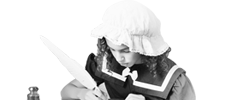Henry Hopwood: The Convict Who Made Good’ by Peter Norris BA
Henry Hopwood was born in Bolton, Lancashire in 1813, the first child of Henry Hopwood Snr and his second wife Mary. In the 1811 Census, Henry, Senior is described as a “muslin manufacturer”. It appears that he was a popular master as a silver cup exists that was presented to him by the grateful weavers of Bolton. This cup was later referred to by Henry Junior in his will as the “heirloom cup”. It is now in Australia.
Henry Junior [henceforth to be referred to as Hopwood] married in 1832 and a son was born two years later, a year to prove very significant in Hopwood’s life. Although having had a good education, he was working as a labourer and unfortunately got involved with a gang of receivers. He was arrested and charged with receiving a bale of stolen silk. At the Easter Quarter Sessions, held in what is now called the Crown Court in Lancaster Castle, he pleaded guilty and was sentenced to a term of 14 years transportation to Australia. Hopwood’s prison record states that he was actually sentenced at Lancaster Assizes but as the Assizes dealt with more serious offences such as murder, this seems unlikely.
Hopwood arrived in Van Diemen’s Land (as Tasmania was then called) in November 1834. His powers of persuasion must have been good for in the following year he was appointed as a police constable and put in charge of other convicts.
Part of his time in Australia was spent in the notorious Port Arthur penal settlement, which is now a tourist attraction in Tasmania. He obviously must have been a model prisoner because in 1843 he was awarded “ticket of leave” status with certain privileges. He was finally pardoned in 1846
Although he had a wife and child in England, seven years’ separation overseas was regarded as a divorce and he married twice more in Australia.
Hopwood moved up to the Murray River area in Victoria, where he was able to obtain a license and opened an inn. He then bought a punt, moored it next to his New Road Inn, indicating that this was to be the new route into New South Wales. Incidentally, just across the Murray, in 1840, a cattle and sheep farm and punt and inn had been set up by a certain James Maiden, who therefore came into direct competition with Hopwood. Their intense rivalry led to several instances of wrecking each other’s punts. It isn’t known if each was aware of the other’s convict past, but incredibly Maiden was sentenced to seven years’ transportation at Lancaster on the very same day as Hopwood! Apart from his second wife, no one in Australia knew of Hopwood’s past. All he would say was “I’m from Bolton-le-Moors and damned proud of it”. As opposed to Hopwood, Maiden’s star was in decline and he sold his business and went off into the goldfields of Victoria where the precious metal had been discovered in 1851. It is not certain when he died, but he is buried in an unmarked pauper’s grave in Bendigo.
On the other hand, things were looking up for Hopwood. From the income from his ferry business and his inn, in the early 1850’s he had bought a better punt, and was erecting a store and a substantial house. He also bought land and built a warehouse and several shops. His possessions were valued at £2,100 in 1854 when the official Surveyor arrived in the settlement and named it Echuca, an Aboriginal name meaning “waters”, which is quite appropriate with the Murray and its tributary, the Campaspe, in the vicinity.
His next venture was to prove very influential in the rapid expansion and prosperity of Echuca. In 1857, a pontoon bridge was erected which was much more convenient for passengers, and especially livestock, than the punt, though that was still in operation in the 1870’s.
In 1858, using wood cut in his own sawmills, Hopwood, now married for a third time, built the Bridge Inn, which still exists. His advertisement for the hotel said that no further comment was required, as it was already known as the best hotel outside Melbourne! At about the same time, he built another bridge over the Campaspe. By now his expenditure had amounted to over £6,000, but income was even higher due to the toll charges Hopwood imposed.
Although many local people had benefited due to the employment Hopwood provided, to say nothing of his duties as postmaster, vintner and even as organiser of a local school [originally begun in a tent but by 1861 in a permanent building], some people, however, saw Hopwood as becoming increasingly arrogant. His cheques and his letters were merely signed “Hopwood” and, among themselves, many referred to him as “King Henry” .
Matters did not always go Hopwood’s way, however. First he had competition from Thomas Mitchell’s butcher’s shop which was later enlarged and converted into the Echuca hotel. A more serious challenge came from James Shackell, who attacked Hopwood’s monopoly of crossing rights and who later became clerk and surveyor. Hopwood withdrew his ferry and pontoon bridge until his rights were determined by law. Unfortunately for Hopwood, this played into the hands of those who were campaigning for a permanent iron bridge, later built after his death. His vineyard was doing very well and the arrival of the railway increased prosperity. In 1866, Echuca Wharf was built and river trade multiplied. Unfortunately, there seemed to be a shortage of good riverboat captains and there were many accidents. In 1866, both Hopwood’s punt and pontoon bridge were damaged. Hopwood had to pay for this himself because although the Murray divides New South Wales and Victoria, the whole of the waterway came under New South Wales’ jurisdiction and it would have been even more costly to pursue his case there.
In December 1868, Hopwood fell ill with typhoid fever. He died on New Year’s Day 1869. He was described at the time as a “Gentleman” residing at Connolly Street, Echuca, and a far cry from his days as a convicted criminal. As befits a bustling man who was forever full of ideas, he appears to have two graves, one in Echuca, [in my opinion, the more likely] and one in Melbourne. In both cemeteries the information and wording on the headstones are almost identical. There is also, in Echuca a granite obelisk commemorating Hopwood.
Henry Hopwood, whose life began so unpromisingly, developed into a showman, a visionary, and an extremely hard worker. He could be arrogant and bombastic but was very loyal to friends and those in need. Without his foresight Echuca, today a very prosperous area, would probably never have been built
I visited Echuca in 2001 and wish to formally acknowledge the help given me by the Echuca Local History Museum.








